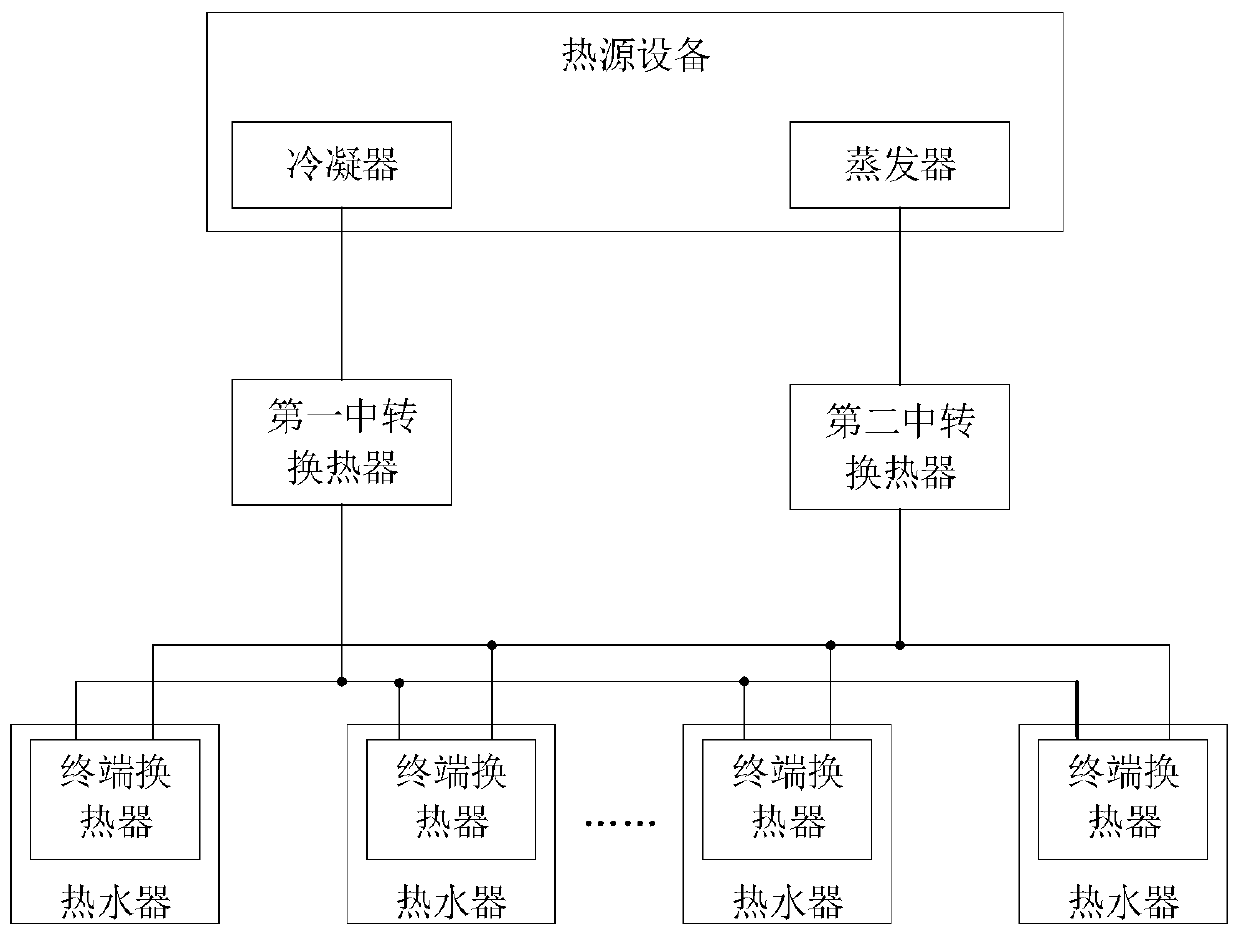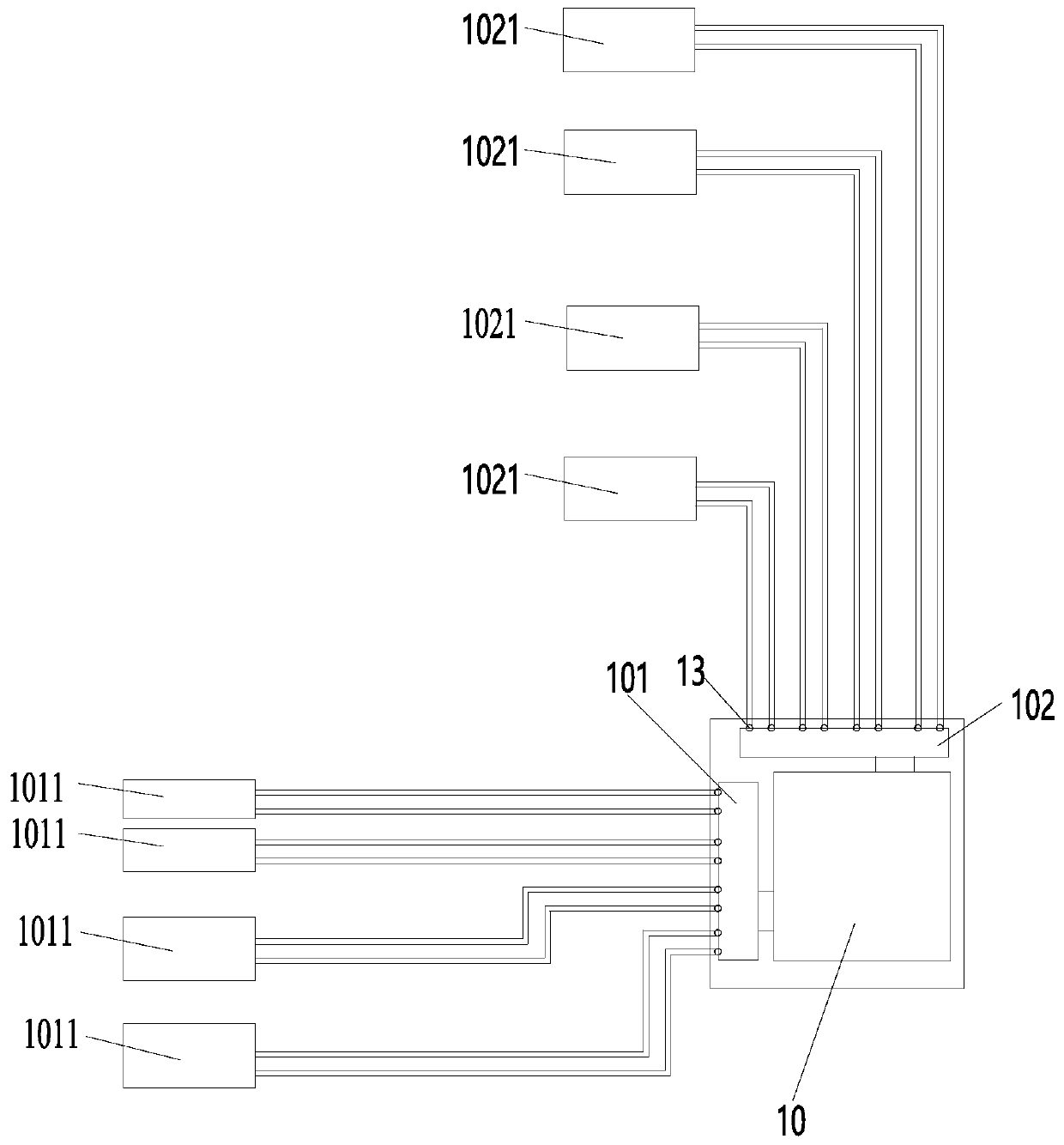Control method of energy system
An energy system and control method technology, applied in the field of energy conservation, can solve problems such as power consumption and energy waste, and achieve the effect of reducing energy consumption and waste
- Summary
- Abstract
- Description
- Claims
- Application Information
AI Technical Summary
Problems solved by technology
Method used
Image
Examples
specific Embodiment approach
[0090] Such as Figure 3eAs shown, in the first type of energy storage station 10, the energy absorbing end 101 is a first heat exchange device, which communicates with the heat exchange device on the side of the temperature adjustment equipment through a set of communication pipelines. The energy releasing end 102 is a second heat exchanging device, which communicates with the heat exchanging device on the side of the temperature adjustment equipment through a set of communication pipelines. That is, the pipelines at the energy absorbing end 101 and the pipelines at the energy releasing end 102 are set independently. That is, the energy absorbing end 101 of the first type of energy storage station 10 is a first heat exchange device with a set of independent communication pipelines, and the energy release end 102 is a second heat exchange device with a set of independent communication pipelines Group, used to communicate with the heat exchange device on the side of the temper...
PUM
 Login to View More
Login to View More Abstract
Description
Claims
Application Information
 Login to View More
Login to View More - R&D
- Intellectual Property
- Life Sciences
- Materials
- Tech Scout
- Unparalleled Data Quality
- Higher Quality Content
- 60% Fewer Hallucinations
Browse by: Latest US Patents, China's latest patents, Technical Efficacy Thesaurus, Application Domain, Technology Topic, Popular Technical Reports.
© 2025 PatSnap. All rights reserved.Legal|Privacy policy|Modern Slavery Act Transparency Statement|Sitemap|About US| Contact US: help@patsnap.com



